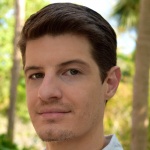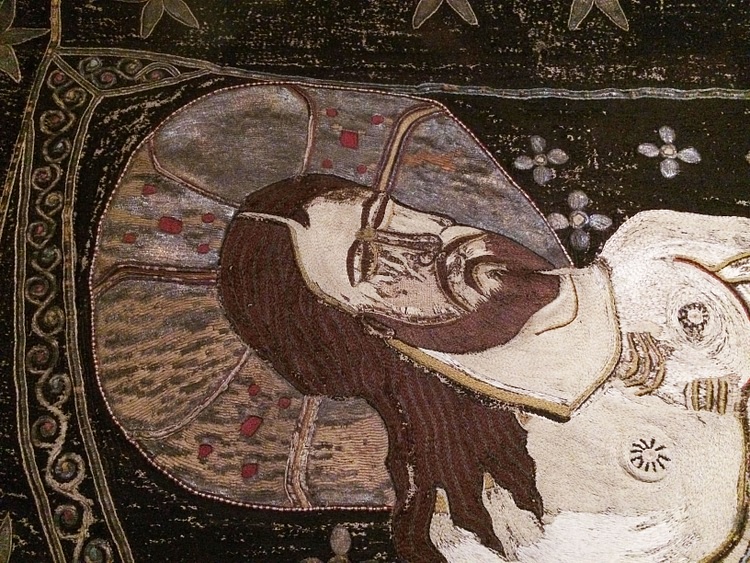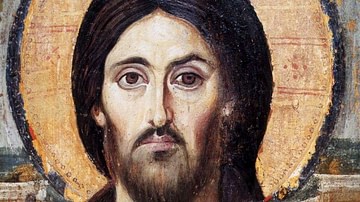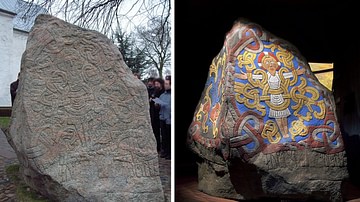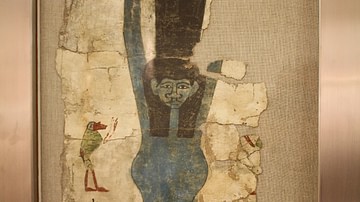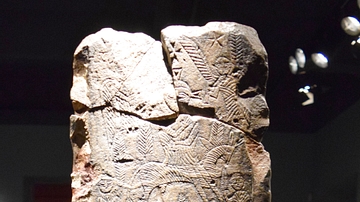Illustration
Made of silk fabric, gold and silver thread, gold and silk twine, as well as colored silks, this holy shroud or "epitaphios" comes from the Sachkhere, which is located in western Georgia, and dates from the 14th century CE. A donor-renovator's inscription is found on this shroud referring to King Bagrat III of Imereti (r. 1510-1565 CE). This shroud was used during Good Friday and Holy Saturday lithurgies in the Orthodox Christian Church. It symbolizes the cloth in which Joseph of Arimathea wrapped Jesus Christ with after taking him down from the cross. It always carries the image of the scene of the Byzantine "Lamentation of Christ." (Georgian National Museum, Tbilisi)
About the Author
Cite This Work
APA Style
Wiener, J. B. (2017, December 18). Detail of a Holy Shroud from Georgia. World History Encyclopedia. Retrieved from https://www.worldhistory.org/image/7770/detail-of-a-holy-shroud-from-georgia/
Chicago Style
Wiener, James Blake. "Detail of a Holy Shroud from Georgia." World History Encyclopedia. Last modified December 18, 2017. https://www.worldhistory.org/image/7770/detail-of-a-holy-shroud-from-georgia/.
MLA Style
Wiener, James Blake. "Detail of a Holy Shroud from Georgia." World History Encyclopedia. World History Encyclopedia, 18 Dec 2017, https://www.worldhistory.org/image/7770/detail-of-a-holy-shroud-from-georgia/. Web. 30 Jun 2025.
